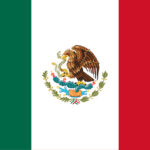Are you planning a trip to Mexico and wondering about the necessary travel documents? A Mexico tourist card, also known as a Forma Migratoria Múltiple (FMM), is an essential requirement for many visitors. At gaymexico.net, we want to ensure your travel experience is seamless, especially for our LGBTQ+ community and allies exploring the beauty and culture of Mexico. This guide provides all the information you need about Mexico tourist cards, ensuring your vacation is smooth and enjoyable. With the right preparation, your Mexican adventure will be unforgettable. Think of us as your go-to resource for inclusive travel tips, LGBTQ+ events, and safe spaces in Mexico.
1. What Is a Mexico Tourist Card (FMM)?
A Mexico Tourist Card, or Forma Migratoria Múltiple (FMM), is a government-issued document declaring that your visit to Mexico is for tourism purposes. This card is essential for anyone planning to vacation in Mexico for up to 180 days. While there are various types of Mexico visas, the FMM specifically indicates that you’re visiting for leisure, not for work or residency.
The FMM requires basic information, including your:
- Full name
- Nationality
- Date of birth
- Purpose of visit
- Flight details
- Address where you’ll be staying in Mexico
Think of it as a visa on arrival, even though it’s technically not a visa. Remember to keep your tourist card in a safe place, as you’ll need to present it when departing Mexico.
:max_bytes(150000):strip_icc()/what-is-a-mexican-tourist-card-1588733-v81-a08b65e1a4ec4343aa000020dc571d3c.png)
2. Who Needs a Mexico Tourist Card?
Most non-Mexican visitors, including infants, staying in Mexico for fewer than 180 days need a tourist card. Previously, travelers remaining within the United States border zone for up to 72 hours were exempt, but now the tourist card is generally required for all non-Mexican visitors.
However, there are exceptions. As of August 2022, Cancun International Airport eliminated tourist cards and customs forms for most foreign visitors, including U.S. passport holders. Instead, travelers receive a stamp upon arrival, ensuring they stay no longer than the permitted 180 days. This rule still applies, regardless of the changes at specific airports.
3. How Can You Obtain a Tourist Card in Person?
If you’re flying into Mexico, you will usually receive a tourist card and instructions for filling it out on the plane. The cost of the tourist card (approximately $25) is typically included in your airfare, so you won’t need to pay upon arrival. The card is stamped at customs/immigration in the Mexican airport, verifying your legal entry into the country. If the flight attendant doesn’t provide you with a tourist card, you can pick one up at an immigration desk at the airport.
If you’re driving, taking the bus, or walking into Mexico, you can obtain the tourist card at the border inspection station or immigration office. You’ll need to show your ID or passport as proof of citizenship. After obtaining the card, go to a bank to pay the fee, and have the card stamped as proof of payment. Then, return to the border immigration office to have the card stamped again, confirming your legal visit to Mexico.
You can also get a tourist card at a Mexican consular office or a Mexico government tourism office in a U.S. city before your trip. This can streamline the process upon arrival.
4. What Is The Process to Apply for the Mexico Tourist Card Online?
For a smoother customs experience, consider completing your immigration form online via the Mexico Tourist Card website. You can apply within 30 days of your trip. Unlike tourist cards obtained in person, these are often free.
Here’s how to apply:
- Visit the Mexico Tourist Card website.
- Fill out the application form with accurate details.
- After submission, you’ll receive your card—consisting of an entry form and an exit form—via email.
- Print both forms.
Upon arrival in Mexico, present the printed forms to an immigration official, who will stamp your exit form and indicate the number of days you’re allowed to stay in the country. The official will keep the entry form, but you must retain the exit form for the duration of your trip.
5. What Is the Length of Validity of a Mexico Tourist Card?
The tourist card is valid for a maximum of 180 days or six months. However, the actual time granted is at the discretion of the immigration official. Often, they grant stays of 30, 60, or 90 days. If you wish to stay longer than the time allotted on your tourist card, you’ll need to either:
- Leave and re-enter Mexico
- Extend your card
- Apply for a tourist or work visa
6. What Should You Do If You Lose Your Mexico Tourist Card?
Losing your Mexico tourist card can be stressful, but it’s manageable. If your card is lost or stolen, you’ll need to replace it as soon as possible.
Follow these steps:
- Visit the nearest immigration office or the immigration office at the nearest airport.
- Pay a fine (reports range from $40-$80).
- Obtain a new card.
The process usually takes a few hours. Bring all relevant documentation, including travel tickets, receipts, and your passport, in case officials request proof of your length of stay.
While deportation is technically possible without proper documents, it’s rare for travelers who have misplaced their tourist cards. Typically, you’ll pay a fine and receive a new card without significant issues.
7. How Can You Extend Your Mexico Tourist Card?
If you want to explore Mexico longer than the initial period granted (but still under 180 days), you can apply for an extension. Visit the National Institute of Immigration Office and bring your passport and proof of income. If you plan to stay longer than 180 days, you must apply for a tourist visa.
8. Why Is Mexico an Appealing Destination for LGBTQ+ Travelers?
Mexico has become an increasingly popular destination for LGBTQ+ travelers, offering a mix of vibrant culture, stunning landscapes, and growing acceptance. Cities like Puerto Vallarta, Mexico City, and Cancun are known for their welcoming atmosphere and LGBTQ+-friendly establishments.
Here’s why Mexico is a great choice:
- Welcoming Destinations: Cities like Puerto Vallarta have well-established LGBTQ+ scenes with numerous gay bars, clubs, and hotels.
- Cultural Richness: Explore ancient ruins, vibrant markets, and delicious cuisine.
- Natural Beauty: From stunning beaches to lush jungles, Mexico offers diverse landscapes.
- Growing Acceptance: While attitudes vary by region, major tourist destinations are generally accepting and inclusive.
According to a 2023 survey by the UCLA Williams Institute, acceptance of LGBTQ+ individuals in Mexico has significantly increased in recent years, with many cities implementing anti-discrimination laws.
9. What Are Some Recommended LGBTQ+-Friendly Destinations in Mexico?
Mexico boasts several cities known for their vibrant LGBTQ+ scenes and welcoming atmospheres. Here are some top destinations:
Puerto Vallarta: Often hailed as the “Gay Riviera,” Puerto Vallarta is renowned for its LGBTQ+ nightlife, beautiful beaches, and inclusive community.
| Feature | Description |
|---|---|
| LGBTQ+ Scene | Boasts numerous gay bars, clubs, and hotels, especially in the Zona Romantica. |
| Attractions | Features stunning beaches like Playa Los Muertos, art galleries, and delicious seafood restaurants. |
| Events | Hosts annual events like Vallarta Pride, attracting visitors from around the world. |
Mexico City: As the capital, Mexico City offers a diverse cultural experience with a thriving LGBTQ+ community.
| Feature | Description |
|---|---|
| LGBTQ+ Scene | Features a vibrant LGBTQ+ scene with bars, clubs, and cultural events in neighborhoods like Zona Rosa. |
| Attractions | Offers a rich cultural experience with historic sites like the Templo Mayor, world-class museums like the Museo Nacional de Antropología, and beautiful parks like Chapultepec Park. |
| Legal Protections | Mexico City has progressive laws protecting LGBTQ+ rights, including same-sex marriage and anti-discrimination measures. |
Cancun: Known for its beautiful beaches and resorts, Cancun also offers a growing LGBTQ+ scene with inclusive venues and events.
| Feature | Description |
|---|---|
| LGBTQ+ Scene | Offers a growing LGBTQ+ scene with several gay-friendly bars and clubs. |
| Attractions | Features stunning beaches, Mayan ruins like Chichen Itza and Tulum, and vibrant nightlife. |
| Accessibility | Cancun International Airport is a major hub, making it easily accessible for international travelers. |
10. What Resources Are Available for LGBTQ+ Travelers in Mexico?
Several resources can help you plan a safe and enjoyable trip to Mexico:
- gaymexico.net: A comprehensive website offering travel guides, event listings, and community connections for LGBTQ+ travelers in Mexico.
- Local LGBTQ+ Organizations: Connect with organizations like Cuenta Conmigo, which provides support and resources for the LGBTQ+ community in Mexico.
- Online Forums: Engage with LGBTQ+ travel forums and groups for firsthand advice and recommendations.
FAQ About Mexico Tourist Cards
Do I need a tourist card to go to Mexico?
Yes, if you are a foreign citizen traveling to Mexico for tourism or short-term business, you generally need a tourist card. An exception applies to those arriving via Cancun International Airport, where a stamp upon arrival is often sufficient.
Where do I get a Mexican tourist card?
You can obtain a Mexican tourist card online, at a Mexican airport (or port if arriving by sea), or at a Mexican embassy in your home country.
How much does a Mexico tourist card cost?
The cost varies. If flying, your airline might include the tourist card in the ticket price. You can also get a card for free online. Applying at an immigration office typically costs around $25.
Can I extend my tourist card while in Mexico?
Yes, you can apply for an extension at the National Institute of Immigration Office if you wish to stay longer than the initially granted period, but still under 180 days.
What happens if I overstay my tourist card?
Overstaying can result in fines, detention, or being barred from re-entering Mexico in the future. It’s crucial to adhere to the allowed stay duration.
Is the tourist card the same as a visa?
No, the tourist card is not a visa. It’s a permit for tourists allowing a stay of up to 180 days for leisure purposes. For longer stays or other purposes like work, a visa is required.
Do I need a separate tourist card for each visit to Mexico?
Yes, a new tourist card is generally required for each entry into Mexico unless you have a multiple-entry visa.
Is the online tourist card the same as the one issued at the airport?
Yes, the online tourist card serves the same purpose as the one issued at the airport. Both allow you to enter Mexico for tourism purposes.
What documents do I need to apply for a tourist card?
Generally, you need your passport and travel details, such as flight information and accommodation address in Mexico.
Can I work in Mexico with a tourist card?
No, the tourist card is strictly for tourism purposes. To work in Mexico, you need to obtain a work visa from the National Immigration Institute (INM).
At gaymexico.net, we’re dedicated to providing up-to-date and reliable information to ensure your trip to Mexico is enjoyable and safe. We hope this guide helps you navigate the essentials of obtaining a Mexico tourist card.
Plan Your Trip with gaymexico.net
Ready to explore the beauty and culture of Mexico? Visit gaymexico.net for comprehensive travel guides, LGBTQ+ event listings, and community connections. Whether you’re looking for the best gay bars in Puerto Vallarta or seeking insider tips for Mexico City, we’ve got you covered.
Address: 3255 Wilshire Blvd, Los Angeles, CA 90010, United States
Phone: +1 (213) 380-2177
Website: gaymexico.net
Explore Mexico with Confidence and Pride!

